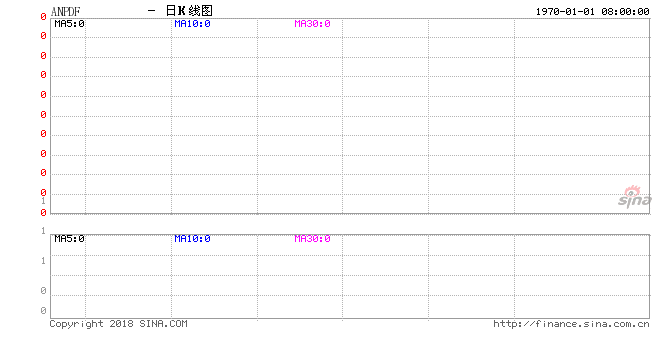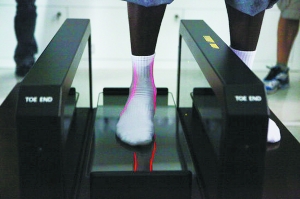
Hot spot funds flow to thousands of stocks to evaluate stocks to diagnose the latest rating simulation trading client
Sina Finance App: Live on-line blogger one-on-one guidance 
Sina Hong Kong stock APP: real-time market exclusive internal reference
Is Hong Kong stock worth not worth investing? What is the problem? Where is the future? Sina Hong Kong stocks launched a " Hong Kong stocks are still not attractive " discussion, with a rational and constructive attitude, welcome people who are concerned about Hong Kong stocks and capital markets, and make suggestions for Hong Kong stocks to jointly seek the future of the Hong Kong stock market. Please come to the manuscript.

In the past, referring to the technical attributes of products, local sports brands are basically in the state of following the trend. However, with the recovery of the domestic sports industry this year, local sports brands began to want to put a label on technology after making a market advantage with price advantage. Beijing Business Daily reporters found that the recent domestic sports brands not only strengthened cooperation with high-tech companies, but also increased investment in research and development. However, from the numerical comparison, the research and development costs between domestic enterprises and international brands still have a large gap; from the conceptual comparison, domestic enterprises are more focused on the research and development of single products, and the development of international brands has extended to the concept and lifestyle. change.
Local companies get together high technology
Recently, Anta announced that it has cooperated with a high-tech materials company named Noble Biomaterials in the United States to produce deodorant shoes. It is understood that Anta's partner Noble Biomaterials Technology's main business is the development and production of high-tech materials for clothing, health care and other fields. Current brands include X-Static, XT2 and Circuitex. And Anta's cooperation with the company is around the brand XT2. The two have jointly developed a new fiber fabric using XT2 odor management technology, and claimed that the material contains silver, which can inhibit the growth of bacteria and fungi in the fabric, making the fabric long. Time is kept fresh. It is understood that this fabric will be applied to all brands of Anta, including Anta, Fila, Descente and Anta Children, which are expected to land in Anta's 7,500 stores this fall. Previously, Adidas also cooperated with the company's CircuiteX.
One of Anta’s competitors, Xtep, did not want to fall behind in the technical aspects of the product. In terms of sports shoes, in addition to the "Power Nest", "Vibration Swing" and "Gas Energy Ring" running series, Xtep also developed "soft pad", "Aroma Technology" and "Xtep Ice Technology". In terms of clothing, it is the introduction of "Ice Fiber Technology" and "Cool Technology". In addition, it also cooperates with Qihoo 360 to develop children's smart shoes with positioning tracking function.
Emphasis on research and development, and the adoption of some new technologies, in essence, is one of the means by which these sports brands enhance their competitiveness. According to the Beijing Business Daily, in the past year, Xtep’s R&D expenses increased by 12.8% year-on-year to RMB 121 million, accounting for 2.3% of the total revenue of the year. Among its partners, Japan’s partners have developed technical fabrics for Uniqlo. Toray and the Dow Chemical Company. According to Anta's 2015 financial report, the cost of research and development is also increasing, accounting for 5.2% of the cost of sales, and research and development accounted for 0.9% of the previous year. In addition, the development cost of 361° and Peak has increased compared with the past few years. Last year, the research and development expenses of the two companies accounted for 3.1% and 2% of the turnover respectively.
In the industry's view, local sporting goods companies are trying to get rid of the state of earning "hard money" in the past, with a sense of science and technology, and compete with foreign brands. As the level of movement of mainstream consumer groups continues to increase, the performance requirements for sports equipment are also increasing. Sports goods companies can only meet market demand by increasing product R&D investment. Secondly, in general, the higher the performance and the higher the technical content, the more expensive the sporting goods. If enterprises want to be in the high-end market of sports goods and obtain higher added value of products, they must pay attention to the pursuit of technological innovation.
High-end products are missing
Looking at the proportion of R&D investment of local sporting goods companies a few years ago, it can be seen that local companies have really worked hard on product development. Taking 361° as an example, in 2012, the Group's research expenses only accounted for 2.1% of turnover. In 2013 and 2014, this figure rose to 2.4%, and the proportion of R&D expenses at 361° last year rose to 3.1%. 361° is also planning to bring back the Sensation series of overseas line products with high R&D efforts to China this year.
However, compared with foreign-funded enterprises, the R&D investment of local enterprises still has a gap. In the last fiscal year, Nike, a foreign sports brand crocodile, used $3.2 billion for product development and innovation, and R&D investment accounted for 10.46% of the cost of sales. In 2010, when the proportion of R&D investment in domestic sporting goods companies was around 2%, Nike had already invested 4% of its sales revenue in product research and development. "From the international experience, companies with R&D expenditures of less than 1% of sales revenue are difficult to survive. Companies that account for 2% of sales revenue can barely maintain, and companies that account for 5%-10% of sales revenue are competitive." Apparel industry expert Zhao Pei explained this.
Is there a huge gap between domestic brands and international brands in terms of technical content due to the investment in research and development? In this regard, Zhao Pei explained that for the low-end and mid-end product lines, the gap between foreign brands and domestic brands is not very large. "The whole industry technology is divided into two types of technology, one is called material technology, and the other is called structural technology. Nike, Adidas and other brands also have shoes for the popular product line. There is no significant gap between the technological content of this type of products and domestic brands. â€
Zhao Pei further pointed out that although the research strength of Chinese local sports brands is strengthening, for high-end sporting goods, more power is needed. "For example, Anta Challenge100 professional running shoes are priced at 499 yuan, while Adidas' professional running shoes are more than 1,000 yuan. From the technical and technological content, we can not judge the two better. But in the present In the consumer environment, the cost-effective strategy of domestic brands, while winning some consumers, also inevitably lowers the technological content of the brand, hindering the company to further enhance the brand influence, it is difficult to win the attention to quality in the first-line market. In addition, Zhao Pei pointed out that domestic brands generally exert their strength in the research and development of their own single-category technology, and more in the field of running shoes. Foreign brands are more flowering, and R&D forces are applied to their respective categories. This is also the difference between domestic and foreign investment in scientific research.
R&D concept still lags behind
After two years of adjustment, the domestic sporting goods industry is gradually picking up, and even voices say that domestic sporting goods companies will usher in the next golden decade. According to data from the China Investment Consulting Industry Research Center, the scale of China's sporting goods market in 2015 was about 149 billion yuan. With the rapid development of the upstream of the sports industry chain, the scale of the sporting goods market is expected to reach 240 billion yuan by 2020. The annual compound growth rate is about 10%. This also makes the domestic key sports goods company headed by Anta have the determination to catch up with Nike and other foreign brands, and increase investment in product research and development.
However, when domestic companies are obsessed with pursuing a technological breakthrough in a shoe, Nike and other foreign-funded enterprises pay more attention to the concept and begin to strive to build itself into a high-tech service company from concept to lifestyle to accessory products. At this point, the gap between domestic and foreign-funded enterprises is still very large. Zhao Pei pointed out that, for example, Nike, An Dema, Adidas and other companies have begun to acquire technology companies with a large number of users and technology talents through internal resources or acquisitions, and at the same time take over the most mainstream models currently on the market. Sports applications, increasing investment in the digital platform, but domestic companies have not yet had a "eyes" and set the layout.
Zhao Pei believes that in addition to the lack of forward-looking, local brands lack the “killing power†on the market. Almost all local sporting goods companies have so-called marketing centers, but in essence they only have sales functions such as logistics, distribution, and store management. The marketing center has become a sales center, and important marketing functions such as sales plans, strategic market entry strategies, and product promotion strategies that should be undertaken by the marketing center cannot be effectively established. “The lack of marketing functions is the root cause of local enterprises' backwardness, and the reason why foreign brands are in a leading position for a long time is also the strong marketing function, which can continuously identify market changes and make accurate responses through overall strategies. Local companies should think carefully, not Trying to solve the problem of 'earth' externally, but to return to the internal marketing function."
Beijing Business Daily reporter Fang Binnan Wang Yuli
Enter [Sina Finance and Economics Unit] Discussion
Products name:Cheap and beautiful wholesale indoor slipper
Out sole:EVA & TPR.
Size: 29cm as normal,size customized.
Upper materrial: fleece.
Logo:offset printig logo, embroidery, hot-trans-printing.
Use:house.Packaging & Delivery:
Packaging Detail: 50-200 pairs per carton as request.
Delivery Detail: 30days.
More:
1. New designed promotional gift slipper2. Customized color and size
3. High quality, fair price
4. OEM/ODM
Indoor Slippers,Indoor Slipper Boots,Washable Indoor Slipper,Indoor Slipper For Winter
Yangzhou Lansun Slipper Co.,Ltd , https://www.lansunhospitality.com